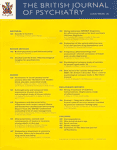

 |
Due To Mania |

Citation:
Manchip SM, Hurel SJ: Rhabdomyolysis due to mania.
Br J Psychiatry; 1995 (July);167:118-9.
NOTE FROM CHAS:
In Jan/Feb 2004, I began posting several RHABDOMYOLYSIS articles because of my growing recognition of the frequent occurrence of rhabdomyolysis being caused during restraint asphyxia incidents. For instance, the following is quoted from a Jul 19 2003 BMJ rhabdomyolysis Editorial:
"SEVERE OR UNACCUSTOMED EXERTION, particularly in extremes of heat ... prolonged seizures ... [or the effects of some] drugs ... can induce rhabdomyolysis, as can ... STATES OF EXTREME AGITATION"
This article further emphasizes the fact that rhabdomyolysis can result "merely" from extremely agitated states (such as "mania"), especially when they are accompanied by extreme and unaccustomed exertion – such as the states that consistently precede and COINCIDE WITH forceful restraint application.

Rhabdomyolysis Due To Mania
Rhabdomyolysis commonly occurs in response to trauma, limb ischaemia, severe exertion or prolonged stasis. It has, however, been associated with wolf attacks, conga-drumming, karate, mechanical bull-riding and deep knee bends (Frucht, 1994). Following injury skeletal muscle enters an accelerated catabolic state releasing myoglobin which is really excreted and precipitates in the renal tubules leading to acute renal failure in up to one-third of cases. Classically the condition presents with myalgia, muscle swelling and tenderness with deep red brown urine. However, incipient deterioration of renal function, haematuria or proteinuria may be the only features. The serum creatinine kinase rises by up to a magnitude of 100 with the MM isoenzyme representing greater than 97% of the total. We report a case of rhabdomyolysis associated with acute mania.
A 67-year-old man presented with a one-week history of profound overactivity, agitation and insomnia. Six months earlier he had been admitted briefly with a similar episode which had been treated successfully with a short course of lorazepam. There was no history of drug abuse and no family history of psychiatric illness. On examination he was profoundly overactive, pacing the room throughout the interview becoming progressively agitated and threatening. He was markedly sexually disinhibited making lurid comments to female staff. Florid pressure of speech with flight of ideas was present although he did not appear deluded or to be hallucinating. Physical examination was normal.
Lorazepam 4 mg per day was commenced and he remained freely mobile on the ward refusing all but minimal quantities of water. His mood settled on the lorazepam but four days following admission he complained of general malaise, worsening bilateral calf muscle pain and darkening of his urine. On examination he was apyrexial, moderately dehydrated with a uraemic foctor. There was no evidence of tissue injury although he had extremely tender calves and forearms. Urinalysis revealed 3+ protein with no blood. Biochemistry demonstrated a deterioration in renal function with a serum urea of 20.4 mmol/L and creatinine of 300 mmol/L. Creatinine kinase was grossly elevated at 7234 iu/L (nr 25-195 iu/L) with MM fraction of 98%. He had myoglobinuria (>100,000 iu/L). He was treated with simple analgesics and intravenous fluids. Urinalysis was negative within five days and the creatinine kinase concentration returned to normal over one week.
To our knowledge, this is the first reported case of rhabdomyolysis due to excessive exertion and dehydration secondary to an acute manic episode though we suspect that mild cases may remain undetected. Patients with psychiatric illness are particularly susceptible to rhabdomyolysis secondary to alcohol or abuse of neuroleptic medication but only two other cases of rhabdomyolysis resulting directly from psychotic disorders have been reported. (Coryell et al, 1978; Frankel & Prassad, 1989.) In the first a patient with a known psychotic illness developed rhabdomyolysis after assuming a catatonic position for an hour. In the second, a chronic schizophrenic required dialysis following four hours continual jumping up and down during an acute psychotic episode. Rhabdomyolysis is a serious and potentially fatal complication of psychosis and should be considered in all cases of overactivity or catatonia.

Frucht M. Challenge, 110 deep knee bends: reward, rhabdomyolysis. New Engl J Med 1994;330:1620-1.
Coryell W; Norby L; Cohen L: Psychosis induced by rhabdomyolysis. Lancet, 1978; 8085, 381-2.
Frankel AS; Prassad RB: Rhabdomyolysis, renal failure and schizophrenia. Psychiatry J of the U of Ottowa, 1989; 141, 296-297.
S.M. Manchip
S.J. Hurel
University of Newcastle Medical School
Newcastle Upon Tyne NE2 4HH.


 Email Charly at: c-d-miller@neb.rr.com
Email Charly at: c-d-miller@neb.rr.com